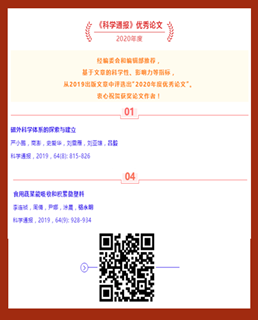On the occasion of “World Environment Day” on June 5th, 2021, CAST Alliance for Ecological and Environmental Sciences and Industry released the “Top 10 Scientific and Technological Advances in China’s Ecological Environment in 2020” in China Hall of Science and Technology. Prof. Yongming Lou’s team achievement, Effective uptake of submicrometre plastics by crop plants via a crack-entry mode, from Yantai Institute of Coastal Zone Research, Chinese Academy of Sciences / Institute of Soil Science, Chinese Academy of Sciences was selected.

Propaganda poster of Top 10 Scientific and Technological Advances in China’s Ecological Environment in 2020: Effective uptake of submicrometre plastics by crop plants via a crack-entry mode
Cr. CAST Alliance for Ecological and Environmental Sciences and Industry
Microplastics have small particle size, large quantity and wide distribution, which are easily absorbed and ingested by organisms, and have potential transmission of food chain and human health risks. The terrestrial environment is the important source and main sink of microplastics pollution, such as sewage, sludge and the application of organic fertilizer, the use of plastic film, atmospheric deposition, tire wear and so on, may lead to the accumulation of microplastics in soil. Although the tiny nanoparticles can penetrate the roots of plants, scientists have previously agreed that it is “unthinkable” and “impossible” that microplastics particles can be found in everyday vegetables and crops. Researcher Yongming Luo from Yantai Institute of Coastal Zone Research, Chinese Academy of Sciences / Institute of Soil Science, Chinese Academy of Sciences and his team took the lead in the study on the uptake and accumulation of microplastics by higher plants. It was found that 0.2 micrometer polystyrene beads could be absorbed and enriched by the root of lettuce under the condition of nutrient solution culture, and migrated from the root to the ground, accumulating and distributing in the stems and leaves that could be eaten directly. The team conducted further through wastewater hydroponic and sand culture and soil culture experiments of simulated wastewater irrigation, and found that plastic particles on submicron and even micron scales could penetrate the roots of wheat and lettuce and enter the plant body, also, under the action of transpirational pull, through the vessels with water and nutrient flow above the ground. Meanwhile, a channel and mechanism for plastic particles to enter the plant body was found: there are narrow gap in the edge of the new lateral root of the plant, through which the plastic particle can cross the barrier and enter the xylem vessels of the root and further transport to the stem and leaf tissues. The result, published in Nature Sustainability and Chinese Science Bulletin, is the first to report and confirm the uptake, transmission and distribution of submicron and even micron plastic particles in vegetables and crops and discovered the lateral root gap channel and mechanism for plants to absorb microplastics. It has broken scientists’ traditional understanding of microplastics cannot enter vegetables and crops and provides scientific basisfor studying the mechanism of microplastics uptake and accumulation in higher plants, food chain transmission and human health risks. The research result was reported or reviewed in the journals Nature Sustainability and Nature Nanotechnology, and was hailed as an important milestone in the research of microplastics in terrestrial ecosystem, which open a new gate for the study of microplastics in terrestrial ecosystem. The article published in the Chinese Science Bulletin won the Outstanding Paper of the Year and the Outstanding Author Award. The paper’s Altmetric Score was 230 on Nature Sustainability and ranking 4th among the 42 papers that published in the same period.
Outstanding Paper Award and Outstanding Author Award of Chinese Science Bulletin in 2020


After the publication of the result, it was reported and republished by hundreds of newspapers, new media and websites, including China Science Daily (front-page), Science and Technology Daily, EurekAlert by AAAS, PhysOrg, Daily Mail, The Daily Telegraph, The New York Times, Yahoo News, SOHU, Tencent and so on. The research result enhance the understanding of the food chain pollution and potential health hazards of microplastics in terrestrial environment.
Under the guidance of China Association of Science and Technology, the selection of “Top 10 Scientific and Technological Advances in China’s Ecological Environment in 2020” was recommended by the members of CAST Alliance for Ecological and Environmental Sciences and Industry and the Academician of Chinese Academy of Sciences and Chinese Academy of Engineering and selected through the public announcement, primary election and the final selection by 15 experts (including 13 academicians of Chinese Academy of Sciences and Chinese Academy of Engineering). The selected contents of this year’s top 10 advances involve hot issues in the field of ecological environment, such as carbon peak and carbon neutralization, the prevention and control of air pollution, water environment protection, accounting method of Green GEP, microplastics pollution, novel corona virus monitoring and so on, which aims to reflect the frontier development trends in the field of ecological environment science and technology, lead the technological innovation in the field of ecological environment and provide scientific and technological support for ecological environment protection and ecological civilization construction in China. The selected projects should have significant advance in science and technology, and need to be innovative, advanced, of great academic value, and have application prospect or well social benefits.